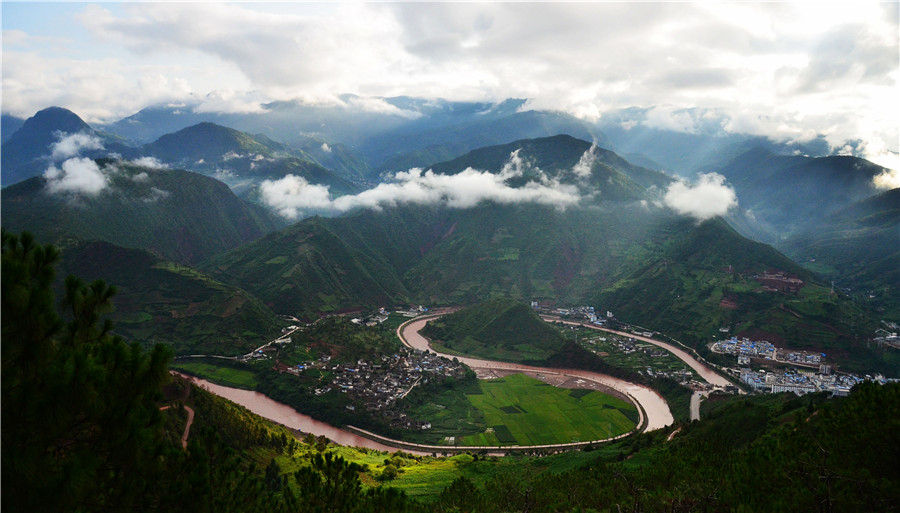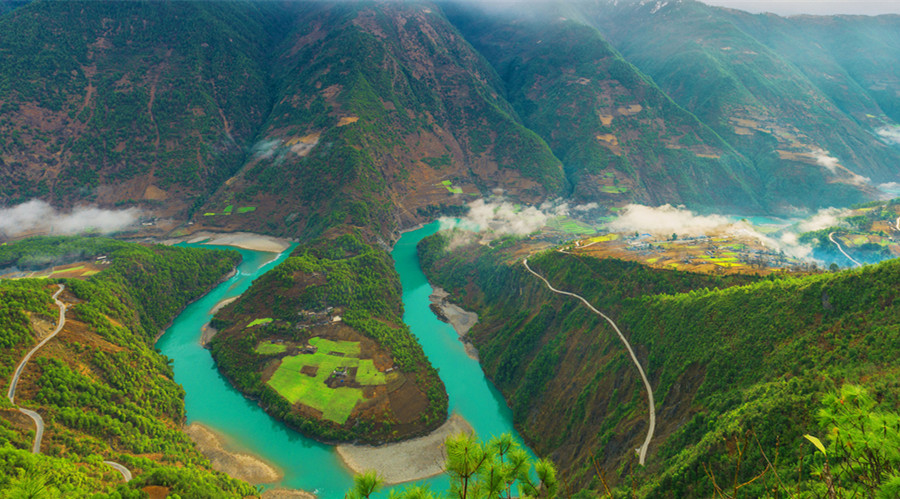Since 2013, approved by the State Council of China, a 72-Hour Visa-Free transit policy has been implemented in 12 airports, it is also including Kunming Changshui International Airport.
Requirement
Travellers process a valid international travel documents issued by the 51 countries
51 Countries List
European member countries of Schengen Visa Scheme: Austria, Belgium, Czech, Denmark, Estonia, Finland, France, Germany, Greece, Hungary, Iceland, Italy, Latvia, Luxembourg, Malta, Netherlands, Poland, Portugal, Slovak, Slovenia, Spain, Sweden, Switzerland
Other European countries: Russia, the United Kingdom, Ireland, Cyprus, Bulgaria, Romania, Ukraine, Serbia, Croatia, Bosnia and Herzegovina, Montenegro, Macedonia, Albania
American countries: the United States, Canada, Brazil, Mexico, Argentina, Chile
Oceania countries: Australia, New Zealand
Asian countries: Republic of Korea, Japan, Singapore, Brunei, the United Arab Emirates, Qatar
Traveller must have flight ticket with confirmed date and seats travel to a”third country or region”
Travel must be arriving at a designated port of entry to China
Traveller can apply for 72-Hour Visa-Free transit to stay in China with the immigration inspection authority to Kunming Changshui International Airport.
Tips: 1. Kunming 72 hours starting count from 0:01 on the day following entry.
2.Traveller transits in Kunming only allow to stay in Kunming city.
Yunnan Provincial Museum
The former one in the downtown has been already closed and the new one was opened in near Guandu Old Town on 18 May 2015. Yunnan Provincial Museum is a magnificent building which is specifically designed to house and display, in a unique setting, the province’s rare and ancient cultural artefacts. The museum is much more than the usual random collection of objects and for this reason is a significant addition to the Kunming’s reputation as the principal venue for cultural exchange between Yunnan and the rest of the world.
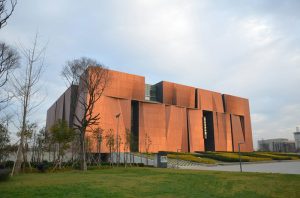
The 10-hectare museum consists of six basic exhibitions and four theme exhibitions including porcelains, ancient paintings and contemporary artworks among which are many rare and priceless items on display for the first time.
Yunnan Nationalities Museum
Dedicated to the ethnic culture of Yunnan province,Yunnan Nationalities Museum is the largest of its kind in Southeast Asia, housing and exhibiting a comprehensive collection of Yunnan ethnic communities’ historic and cultural artifacts.
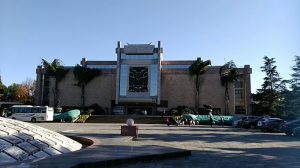
Kunming City Museum
Covering an area of 20,000 square meters, Kunming City Museum is a local comprehensive museum. One of the major reasons for constructing the museum is the Buddhist Sutra Stone which was sculpted during the Dali Kingdom (938-1253) period in the Song Dynasty (960-1279). Other theme exhibition halls include the Flying Tigers Memorial Hall and Bronze Culture Hall and so on.
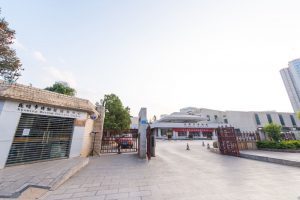
Kunming Natural History Museum of Zoology
Yunnan is referred to as “The Kingdom of Animals”, and in its capital city Kunming, why not have a look in Kunming Natural History Museum of Zoology which curates the largest exhibition of its kind in Southwest China?
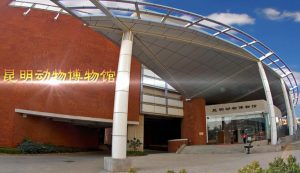
Yunnan Railway Museum
To some extent, Yunnan Railway Museum is dedicated to the Yunnan-Vietnam (Kunming-Hanoi) Railway which was constructed in the early 20th century.
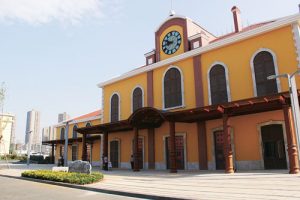
The History Museum of Yunnan Military School
History Museum of Yunnan Military Academy and School in Kunming is namely the former site of Yunnan Military School which is one of the earliest military schools in China established during the Qing Dynasty (1644-1911) to train modern officers and is of significant historic interest.
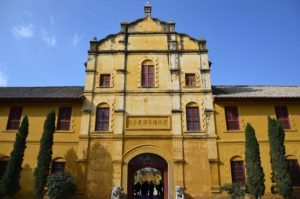
China Stone Forest Karst Geological Museum
China Stone Forest Karst Geology Museum is based on 7 galleries, which reflect the evolution of Karst geological landforms, development history of the Earth and so on. It is typically suitable for visitors to the Stone Forest.
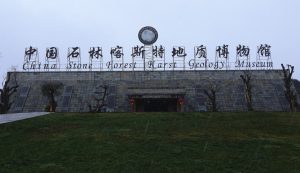
More Top ten museums in Kunming
http://www.chinakunming.travel/html/180827/1056.html
Introduction
- Chinese Name:宁洱县困鹿山哈尼茶祖节
- English Name: Tea Primogenitor Festival of Kunlu Tea Mountain in Ninger County, Puer
The Hani people in Kunluo Mountain make a living by growing and guarding tea. Both local Hani communities involved in tea cultivation and protection have rituals related to tea ceremonies. Even people from distant places like the Yao and Dai ethnic groups in Xishuangbanna Prefecture consider ancient tea trees as sacred trees, venerating their ancestor – Kongming, as the Tea Ancestor. Therefore, every year on the second day of the second lunar month and June 24th during the “Bitter Wrath Festival,” Hani villagers use pigs, cows, chickens, and sheep as offerings in prayers to the Tea King tree. They set up offerings of alcohol, light incense, and invite “Ah Bu Mu Pei” for prayers. “Ah Bu Mu Pei” holds a large red rooster, burns incense, and prays under the tree, placing stones for the ritual.
Queen of Fine Leaves and the Royal Ancient Tea Garden of Kunlu Mountain are renowned in the Pu’er tea world. In 2020, the auction price for the picking rights of the Queen of Fine Leaves reached 170,000 RMB.
Kunlu Mountain Royal Fine Leaves Harvest Festival
Every spring, the Kunlu Mountain Royal Fine Leaves Harvest Festival is held at the Royal Ancient Tea Garden of Kunlu Mountain in Ning’er County, Yunnan. The 2024 event took place in April, attracting numerous tea enthusiasts and guests. This year, new activities such as tent camping experiences and the “Shenshi Fine Leaves Tasting” were added, allowing visitors to enjoy tea mountain tours and Pu’er tea tasting at the campsite.
- Elevation: Kunlu Mountain is one of the higher peaks in Pu’er City, with an elevation between 1400 and 2300 meters.
- History: In the seventh year of the Yongzheng era (1729), the Kunlu Mountain tea garden was designated as a royal tea garden by the Qing government. The name “Kunlu Mountain” comes from the Dai language, where “Kun” means depression and “Lu” means bird, signifying “a mountain with many birds.”
- Area and Features: The ancient tea tree cluster on Kunlu Mountain covers an area of 10,122 acres. The diversity and richness of ancient tea trees here are impressive, earning it the title of “Tea Museum.” The thousand-year-old “Queen of Fine Leaves” is especially prized for its unique taste and rarity.
Fine Leaves Harvest and Tasting
- Harvest Time: Every April at 8 AM, the Queen of Fine Leaves is harvested.
- Event Schedule:
- 8 AM: The Queen of Fine Leaves is harvested, and the tea company Zishe leads tea enthusiasts in paying homage to the Tea Ancestor.
- 12 PM: The opening ceremony of the Kunlu Mountain Initial Processing Camp takes place, where Zishe sorts and prepares the fresh leaves.
- 3 PM: The “Shenshi Fine Leaves Tasting” event begins, showcasing the true flavor of Kunlu Mountain fine leaves.
- 7 PM: The highlight of the festival, the “New Product Launch,” is held online, with Zishe’s new tea products like “Purple Silver Charm” making their debut and receiving wide acclaim.
Zishe Tea Company’s Innovations and Craftsmanship
- Zishe Tea Company: Zishe has deep expertise in Kunlu Mountain’s ancient tea trees, continuously improving their techniques and processes for picking, preserving, transporting, withering, and roasting tea leaves. They have developed a unique tea-making method.
- On the Harvest Day: To capture the best flavor of the fine leaves, Zishe selected special stoves. Tea master Li Jun adjusted the temperature, time, and speed during roasting according to the type of fine leaves, differing from the usual high-temperature, fast-roasting methods.
Su Lan and Zishe Tea
- Su Lan: The founder of Zishe, has a profound connection to Kunlu Mountain. He views Kunlu Mountain as a brilliant gem and is committed to exploring and studying its genetic resources to enhance the tea quality.
- Charity Activities: In 2021, Zishe organized a charity auction, donating the proceeds from a premium Kunlu Mountain ancient tea package to Pu’er Middle School. They also established the “Zishe Tea Art Society” at the school to promote traditional culture.
Kunlu Mountain Royal Ancient Tea Garden’s Tea Tree Characteristics
- Tree Age: The ancient tea trees on Kunlu Mountain grow in forests at elevations above 2271 meters, with most trees over a thousand years old.
- Tea Characteristics: The Pu’er tea produced from the Queen of Fine Leaves is known for its clear aroma, mellow taste, and lasting fragrance. The tea has a sweet aftertaste and is a rare, valuable variety suitable for collection or drinking.
Market Value
- Queen of Fine Leaves: Each year, the tea trees produce 10-15 kg of fresh leaves, which, at the historical price of 12,000 RMB/kg, yields an annual income of up to 180,000 RMB. Due to its scarcity and high price, it is challenging for many tea enthusiasts to obtain.
- Other Ancient Teas: The prices of other ancient teas from Kunlu Mountain are also rising, but they continue to attract many tea enthusiasts.
Overview and Introdutcion
- Chinese Name:景迈布朗山康茶祖节
- English Name: Shankang Tea Primogenitor Festival in Jingmai Tea Mountain, Puer
“Blang Sang Kang Tea Ancestor Festival” is called “Hao Gou Long” by the Blang people and is similar to the Chinese Spring Festival, symbolizing the removal of the old and the welcoming of the new. The festival typically takes place from the 27th day of the second lunar month to the first day of the third lunar month. At the start of the new year, the Blang people express their remembrance and worship of their ancestors, praying for their blessings. The festival originates from the activities of the Blang ancestors in Mangjing Village, Huimin Town, Lancang County, who discovered, domesticated, cultivated, and used tea. Over centuries, this festival gradually evolved and became a customary practice.
Origins of the Festival
The festival is believed to have originated around the Buddhist calendar year 800 (899 AD), with the formal tea soul worship ceremony starting 100 years after tea cultivation began on Jingmai Mountain. According to legend, the tea soul is the embodiment of the tea ancestor Pa Ya Leng, and the tea soul tree is the first tea tree planted. During the worship ceremonies, Blang tea farmers visit specific locations in the ancient tea mountain forest to pay homage to the tea ancestor and summon the tea soul. This is done to commemorate the tea ancestor, remember the forebears, and express reverence and worship. The Blang people, known for their gratitude, sincerely pray to the ancestors who cultivated the tea mountains and left them for their descendants. It is believed that the tea soul tree possesses both human and divine spirituality, and by summoning the tea soul and worshipping the tea ancestor, they devoutly pray for the well-being, happiness, favorable weather, and prosperity of their descendants.
Festival Activities
- Day One (New Year’s Eve): Every household engages in thorough cleaning, slaughters pigs and cattle, and prepares “Er Nuo Suo,” also known as yellow sticky rice cake, an essential gift for offering to the Buddha and presenting to relatives and friends during the festival. On the morning of this day, the youngest family members present the best dishes prepared at home to the elders, kneeling as they invite them to eat, wishing them a happy festival, good health, and long life. They also extend their hands, palms up, to receive the elders’ blessings.
- Day Two (New Year’s Day): This is the most lively day, with each village holding grand Buddha offerings, song and dance competitions, and water splashing festivities. Three cannon shots announce the start of the new water collection, with 5-7 representatives from each village going to the mountains to fetch the new water. The collected water is used to prepare medicinal water for washing Buddha statues. The water used for washing is then eagerly taken home by villagers for washing the faces of the elderly and children for good fortune. This is followed by offerings of food, sand mounds, water drops, and tree supports, all part of ancestor and deity worship activities.
- Day Three: People go into the mountains to worship the mountain gods and ancestors. The entire village, men, women, and children, drums in hand, bring offerings to the dense forest behind Mangjing for a worship ceremony. Finally, everyone gathers at the old site of the Dragon Pool, singing and dancing, bringing the previously quiet forest to life.
- Day Four (“Tea Ancestor Day”): Men, women, and children dressed in their finest attire head to the ancient tea mountains to worship the tea soul and honor their ancestors.
Forms of Worship
The Blang Sang Kang Tea Ancestor Festival features both major and minor worship ceremonies, held in a three-year cycle. The first and second years involve minor ceremonies, where villagers bring some offerings to the tea soul altar. The third year is marked by a major ceremony, including a grand bull sacrifice, where the bull’s head is taken to the tea soul altar as an offering to the tea ancestor.
Significance of the Festival
The festival retains a simple ecological philosophy and life pursuit, reflecting the Blang people’s primitive ecological development views. It embodies the spirit, beliefs, and values of the Blang, showcasing the ancient religious culture of the Blang people and carrying significant historical and primitive memories. The Blang region’s long agricultural history and relatively stable cultural environment have preserved many original agricultural cultures and traditional customs in the activities of the “Blang Sang Kang Tea Ancestor Festival.” Some religious rituals performed during the festival provide valuable insights into the history and culture of the Blang people.
Cultural Heritage
As society rapidly develops, the traditional production and lifestyle of the Blang people are gradually disappearing. With the passing of the older generation of inheritors, fewer people are knowledgeable about Blang customs and rituals. The Sang Kang Tea Ancestor Festival lacks an organizational mechanism, and the participation of the community has been declining under the influence of external cultures.
Recognition and Honors
In 2017, the Blang Sang Kang Tea Ancestor Festival was included in the fourth batch of provincial-level intangible cultural heritage representative projects in Yunnan Province. The representative inheritors of the project are Kang Langbing and Su Guowen.
Cultural Customs
At dawn, villagers bring prepared river sand and rice wrapped in banana leaves, sticky rice cakes, tobacco, tea, and other offerings to the communal house. Surrounding a bamboo altar about one square meter in size, they hold lit candles and chant, circling the altar and placing a pinch of rice into baskets on the bamboo rack. They also hang yellow sticky rice cakes, tobacco, tea, fruits, and flowers on the bamboo frame as offerings to the Buddha and ancestors. The sand is formed into small mounds, placed under the altar, each representing a family or individual, praying for the protection and blessings of the gods and ancestors. After three cannon shots, the entire village beats drums, sings, dances, and gathers in the communal house, where the elderly have already been chanting scriptures and praying before the Buddha statue. The Buddha statue is washed with medicinal water prepared from the new water.
The final activity is “supporting the tree.” Each village’s communal house has a sacred tree, and during the Sang Kang Festival, each family brings a tree branch to support the sacred tree, symbolizing the belief that if the tree does not fall, neither will the family, ensuring health and happiness.
After lunch, another event begins: a song and dance competition and water splashing celebration. People, dressed in their festive best, flock to the dance venue, where bystanders splash them with homemade herbal water or clean water as a blessing. In the lower village of Mangjing, a meticulously crafted elephant figurine is also pushed to the center of the dance floor as a symbol of good fortune.
The most eye-catching and amusing part of the dance are the two lead dancers, called “Da Bie,” who are wrapped from head to toe in black cloth, with only holes for their eyes, nose, and mouth. According to legend, they are two gods sent by the Heavenly Emperor, disguised as the poorest people to observe the sincerity and moral character of those devoted to the Buddha, while also playing the roles of entertainers and protectors. Each carries a bag around their neck and, when they dance, they ask people for alms to test their generosity, and people are always willing to give. After the dance, the young men and women begin the water-splashing revelry.
Next comes the communal meal, also called a reunion meal. Each family brings the dishes they prepared, wrapped in banana leaves, to share. The food is placed on tables, and each person selects a packet of rice and two packets of dishes. The rice is partially glutinous, and the dishes are diverse. The mix of food and the fragrance of banana leaves give the meal a unique flavor. People eat, drink, chat, and laugh together, enjoying the festive atmosphere.
At night, the festivities continue with fireworks and high-rise lanterns under a canopy of sparkling lights, as people continue to sing and dance.
Tea Primogenitor in Yunnan
Global tea culture origins from China, Shennong is honored as the very first primogenitor of tea. However, instead of Shennong, Kongming(Known as Zhuge Liang among Chinese)is regarded as the tea primogenitor in Yunnan. Historical stories tell that when Kongming led his army to Yunnan, most soldiers were sick due to the poisoning local mist, then Kongming dreamed of an elderly in white and was told that tea would help curing the soldiers. Tea actually worked and brought the army victory. Kongming decided to plant tea in Yunnan in memory of that elderly in white and also to develop local agriculture.
In the ancient tea plantation section of Yunnan remain Kongming Mt.and Kongming Tea. Natives hold the tea primogenitor ceremony every year to celebrate the birthday of Kongming on 23rd of the 7th lunar month.
Besides Kongming, some ethnic groups in Yunnan tea producing area also worship ancient tea trees or local Guardians of mountains. Bulang villages worship their ancestor Pa Aileng, who had been considered to be the first Bulong people planted tea.
Ring Route of Tea Culture (Recommended Route)
15 Days Journey
Kunming-(5.2h/385km)-Ning’er-(0.8h/46km)-Pu’er-(4h/203km)-Yiwu-(4h/162km)-Menghai-(2.5h/113km)-Langcang-(2.6h/102km)-Ximeng-(5.3h/218km)-Shuangjiang-(3.7h/192km)-Fengqing-(7.5h/285km)-Zhenyuan-(5.5h/125km)-Jinggu-(3.5h/213km)-Mojiang-(3.7h/267km)-Kunming
7 Days Journey
Route A:
Kunming-(5.2h/385km)-Ning’er-(0.8h/46km)-Pu’er-(2.6h/136km)-Jinggu-(5.3h/279km)-Fengqing-(7.3h/285km)-Zhenyuan-(6.2h/450km)-Kunming
Route B:
Kunming-(5.2h/385km)-Ning’er-(0.8h/46km)-Pu’er-(4h/203km)-Yiwu-(4h/162km)-Menghai-(2.5h/113km)-Langcang-(2.6h/102km)-Ximeng-(11.2h/689km)-Kunming
3 Days Journey
Kunming-(5.2h/385km)-Ning’er-(0.8h/46km)-Pu’er-(5.8h/418km)-Kunming
Trip to Tea Mountains(Recommended Scenic Spots)
Pu’er
Jingmai Mangjing Ancient Tea Plantation of Ten Thousand Acres
The plantation projects locates in Huimin Town, Langcang County of Pu’er. It’s the best protected and largest remaining artificial cultivation tea plantation all over the world, honored as the Natural Tea Museum as a historical witness of the development of Chinese tea culture. The plantation is considered as an important display of tea cultural tourism in Langcang, and it’s listed as the first batch of “Chinese Folk Cultural Heritage Tourism Demonstration Area”.
Over 20km to Huimin Town which is 47km away from Langcang County.
Qianjiazhai Wild Ancient Tea Tree Groups
Wild tea tree groups in Zhenyuan County seat Located at latitude 24 degrees 7 minutes,east longitude 101 degrees 14minutes, with an altitude of 2100~2500m, covering an area of 28747.5 acres among the primeval forest in Ailao Mt. National Nature Reserve which is the largest and best protected subtropical wet broad-leaved forest.
King of wild tea trees is 25.6m tall and its diameter at breast is 0.89m, known as #1 Shangba. According to experts’ opinion, this tree is over 2700 years old, it’s the oldest wild tea tree known so far thus it’s called the King of wild tea trees, won the Guinness World Records in 2001.
Kunlushan Mt. Royal Ancient Tea Plantation
Kunlushan Mt. was once the royal tribute tea producing area, the picking and making processes of tribute tea are supervised by troops. Almost all kinds of wild tea trees distribute within the virgin forest covering 10122 acres. Kulunshan Mt. is also the nearest tea plantation to Kunming with the most convenient traffic conditions.
Yingpanshan Mt. Tea Plantation
Yingpanshan Mt. obtains the nearest tea plantation to Pu’er city. The distribution of tea covers an area of 23 thousand acres, tea plantation goes ups and downs along with the mountains. On the highest peak of Yingpanshan Mt. seats Wenchalou Tower, and the only Pu’er Tea theme park in China, known as China Tea Expo Garden. Tourists could take park in the making process of Pu’er Tea, or learn more about tea culture and try a cup of refreshing fragrant tea.
Xishuangbanna
Bada Tea Plantation in Menghai
Speaking of Bada, the Bulang people consider it as “where the immortals left footprints” in their language. It’s a famous place among tea fans in China and abroad. In 1962, Yunnan Institution of Tea found an ancient wild tea tree over 1700 year old in virgin forest beside Hesong Village in Bada, experts and tea fans hand been visiting this place almost every year since then. Bada obtains most of wild tea trees in Xishuangbanna, the original tea trees grow in an area over 6000 acres. There are also large artificial cultivation tea [FS:Page]plantation in Bada, which distribute in villages like Zhanglang, Manmai, Manpi and Manpana.
Nannuoshan Mt.
Nannuoshan Mt. seats in Menghai, Xishuangbanna is one of the six major tea plantation mountains in Yunnan, Nannuoshan is also called as the very village of ancient tea trees in Yunnan, known for its rich resource of ancient trees. Various kinds of tea trees grow among Nannuoshan Mt. the hybrid growth of the tea trees covers an area of over 1000 acres, Banpo Old Village and Bama Village are the typical ones.
Yiwu Ancient Tea Plantation
It’s the largest one among the six major tea plantations in Yunnan. Yiwu obtains a long history of planting, producing and trading tea, during the latter period of the Qing Dynasty, Yiwu had become the producing and trading center of tea in Yunnan. The Yiwu Tea Plantation is often described as “tea trees cover the mountains, tea planted in every village”. Ancient tea trees mainly distribute in Mahei and Yiwu Village.
Menghai Hekai Ancient Tea Plantation
Hekai Ancient Tea Plantation seats in the southeastern region of Menghun Town in Menghai County with an altitude of 1400~1700m, share the same mountain range of the famous Laobanzhang Tea Plantation. It’s one of the best-protected and the largest contiguous tea plantations in China. Cultivation tea tree distribute in an area of 8700 acres. Six Lahu villages locate among the plantation, ancient tea trees grow around the houses of the villagers, forming a picture of people and nature live together in harmony as “tea trees in the woods, villages in the tea gardens”, which makes Hekai the most beautiful tea plantation.
Dadugang Tea Plantation of Thousands Acres
The plantation seats in Dadugang County of Jinghong City, Xishuangbanna Prefecture. It has a tea garden over 75 thousand acres, the world’s largest contiguous tea garden of 42 acres brought the title of the Top Ten Most Beautiful Tea Gardens of China in 2013. Every March to October is the best time to travel, tea leaves grow after the spring rainfalls, fresh air of tea fills the plantation area, makes tourists comfortable.
Lincang
Queen of the Ancient Tea in Fengqing Xiangzhuqing Valley
Fengqing County of Lincang obtains rich resources of ancient tea trees, it has a cultivation tea plantation over 2000 acres and a wild tea plantation over 3000 acres. The plantations distribute in a region reaching Longtanghe River in the east end, Tengmieshanhe River in the west end, Zhafanghe River in the north end, and Huangcaoba Dam in the south end, with an altitude of 1750~2580m. On the highest peak of Xiangzhuqing Valley grows the world’s oldest giant tea tree of 3200 years. The giant tea tree is called the Splendid Tea Primogenitor by local natives and the Queen of the Ancient Tea by researchers. It stands for the ancient cultivation tea trees in Fengqing, as well as the global largest ancient tea tree with a chest diameter of 1.84m that surrounded by 8 men.
Worshiping the Tea Primogenitor
Shankang Tea Primogenitor Festival of the Bulang Ethnic in Jingmai
“Shankang Tea Primogenitor Festival” is a traditional celebration of the primitive Bulang religion in Jingshan Mt. In every mid April, right after the collecting of spring tea, villagers in Jingmang Bulang villages dress on festive costumes and gather at the temple square of Payanleng, to hold worship activities and recall the spirits of tea, the celebration has a history of over 1710 years. The Bulang people believe that the spirits of tea are either human and immortals, the spirits are recalled in hope of guarding and blessing the Bulang people in the coming years. Tourists with interests might enjoy the Bulang culture and the tea culture by viewing Jingmaishan Mt..
Hani Tea Primogenitor Festival in Kunlushan
The Hani people in Kunlushan Tea Plantation mainly live on planting tea, there is a worshiping celebration for Kongming, the tea primogenitor and the ancestor of local people, among the local Hani people and even the Dai and Yao people far away in Xishangbanna. On the 2nd day of the 2nd lunar month and the Kunu Festival on the 24th day of the 6th lunar month, the Hani people pray to the King Tea Tree by sacrificing pigs, ox, chickens, and goats. Clergies called “Abumubi” are inquired to pray and worship the tea tree carrying a red cock and burning incenses in front of the tree.
China Pu’er Tea Festival Events
China Pu’er Tea Festival took place on 23rd May 2015 in Pu’er City. The theme of the events is “Godsend Pu’er of Talent, Tea Origin of Worldwide, Preserving the Culture and Protecting the Heritages”. The events are co-hosted by China Cultural Institute, Pu’er Government, and Humanistic Religious Research Branch of Beijing Normal University. Celebrating events including Openi[FS:Page]ng Ceremony, Worshiping Tea Primogenitor Ceremony, Chine Tea Culture Summit Forum, Pu’er Tea Competition, Pu’er Tea Products Trade Fair, Pu’er Specialties Exhibition, the Inscription Support Event of Pu’er Jingmaishan Ancient Tea Plantation, and so on.
Recommended Delicacies
Pu’er
Beef Salad, Roasted Pupae, Traditional Dai Flavor Boiled Rice Noodle
Xishuangbanna
Purple Rice Steamed with Pineapple, Dai Flavor Barbecue, Jinuo Style Tea Salad
Lincang
Roasted Suckling Pig, Wa Style Chicken Porridge
Recommended Restaurants
Pu’er
Golden Shore Dai Flavor
Add: Shilong Rd. Simao Dist.
Tel: 0879-2163339
consumption per person: ¥40.00
Zhous’ Manor
Add: Simao Yangguang Rd. Simao Dist.
Tel: 0879-2140808
Business Hour: 0900am-2030pm
Lao Guai’s Soak Chicken Claws
Tel: 0879-2135758
Xishuangbanna
Guhua Tuji Roasted Chicken(Menghai Fochen Tuji Roasted Chicken)
Add: #105 Grand Temple, Manhe Village in Menghai County
Tel: 0691-5138811
Business Hour: 0900am-2200pm
Linsi Barbecue
Add: #70 Laojie St. in Menghai County
Tel: 13988166639
Yedena Delicacies Court
Add: Fozhao St. in Menghai County
Meiwei Xiaojiayuan Restaurant
Add: Jingmai Rd. in Menghai County
Tel: 0691-5121660
Lincang
Jialong Restaurant
Add: #76 Fengwu Rd. in Fengqing County
Tel: 0883-4213129 0883-4212081
Business Hour: 0800am-2400pm
Dazhong Restaurant
Quite a flavor that meets everyone’s need with a reasonable cost. Recommended dishes include Lushi Bean Curd, Homemade Pickled Cabbage Fried Pork Slices, Fried Crisp, Homemade Ham, Bean Soup, and Sausages.
Add: South Dianhong Rd. in Fengqing County
Tel: 13988353832
Hengfeng Inn
Add: Fengwu Rd. in Fengqing County
Recommended Hotels
Pu’er
Pu’er Kaiyuan SPA Hotel of Meizihu Lake
The hotel obtains ethnic characteristics of SEA and Yunnan mixed with the unique scene of Meizihu Lake. The sightseeing plat and the forest paths distribute among woods beside the lake.
Add: Gaojiazhai Meizihu Lake Scenic Spot in Simao Dist., Pu’er
Tel: 0879-2318888/2318777
Pu’er Kaiyuan Lesser Panda Manor
The Lesser Panda Manor satisfies not only tourists’ common needs but also the needs to conferences, entertainment, hiking, and exploration.
Add: 37km southeast to Simao Dist., Pu’er.
Tel: 0879-3037000
Yunnan Jingmai Brilliant Resort & SPA
The only Relais & Châteaux hotel of Membership in west China, right next to Jingmai Mangjing Scenic Spot constructed based on the ancient tea garden.
Add: Huimin Town in Langcang County
Tel: 0879-7525666
Xishuangbanna
Menghai Golden Chain SPA Restore
Large scales and high vegetation coverage rate, interiors and facilities of local Dai style.
Add: Manxinghu Lake Reservoir beside Xiangshan Community in Menghai County.
Tel: 0691-3087777
Menghai International Grand Inn
The landmark of Menghai, mixture of fashion elements and ethnic attractiveness.
Add: #14 Nanhai Rd. in Menghai County.
Tel: 0691-3028888
Anantara Xishuangbanna Resort & SPA
Locates in Menglun Town, Mengla County, Jinghong Prefecture, near Xishuangbanna Tropical Botanical Garden.
Add: Menglun Town, Mengla County, Jinghong Prefecture
Tel: 0691-8936666
Lincang
Fengqing Dianhong Grand Inn
Various room types, near the shopping mall.
Add: #1 Fengcheng, in Fengqing County.
Tel: 0883-4691777
Recommended Souvenirs
Tea
Tea origins from Yunnna, local people are fans of tea, the province produces nice tea. 26 different ethnic groups in Yunnan enjoy tea in various ways beside the everlasting bonfires or on the ancient tea-horse route.
Pu’er tea earns most reputation among local tea brands. Pu’er tea could be divided into 2 types and distributes in Pu’er, Lincang, and Xishuangbanna. Tea from different regions might vary in flavor, beside Pu’er Tea there are also brands like Fengqing Red Tea, Dianlv Green Tea, Dali Tuo Tea & Snow Tea, and Kunming Miles-Fragrant.
Pu’er
Ning’er Silver Products
Lesser Spicy Sparrows
Zhenyuan Local Eggs
Xishuangbanna
Dai Weaving
Tropical Fruits
Lincang
Wa Blankets
The Tongpas
Tips
Auto Repairing
Liming Repairing
Menghai County
13988187064
Guangfu Imported Auto Repair Shop
Mengla County
0691-8122566
Fangyuan Repairing
Mengla County
0691-8121150
Shentong Repairing
Across the gas station in new downtown of Ximeng County
0879-8344899
In the cool weather of autumn, there are many choices around Kunming for aficionados of outdoor tours since they can enjoy an impressive experience, and these Ten selected trekking destinations might be the least beat even the locals might not know about.
1. Gudui Mountain in Jinning District

The mountain is located between the three counties of Jiangchuan, Chengjiang and Jinning. Ascending the top is rewarded with a birds-eye view of the three lakes which are respectively the Fuxian Lake, the Xingyun Lake and the Dianchi Lake. Carpeted with vegetation mainly including grasses and shrubs, the route is highlighted by blooming flowers in the seasons of spring and summer.
Highest altitude: 2,648 metres
Duration: one day
Trekking mileage: 8-12 km
Route: 80 km from Kunming; Kunming-Jinning County-Sanchahe
2. Heifeng Mountain in Anning City

The mountain is so named because there’s a cave on its top called Heifeng Cave. A huge mountain undulating dozens of kilometres, Heifeng Mt is endowed with diversified vegetation and exuberant forests. For most locals, it is a must for camping and excursion.
Highest altitude: 2,617 metres
Duration: one day
Trekking mileage: 16 km
Route: 70 km from Kunming; Kunming-Bajie Town (Anning)
3. Laogui Mountain in Shilin County

The highest mountain in Shilin County where the Stone Forest is, it is a national forest park located between the counties of Shilin, Mi’le and Luxi.
Highest altitude: 2,601 metres
Duration: one day
Trekking mileage: 6-8 km
Routes: 130 km from Kunming; Kunming-Shilin County-Guishan Temple
4. Jintongpeng Mountain in Fumin County

Named due to its profile resembling to a reverse copper basin, the mountain is the origin of the drinking water of the locals. Legend goes that the water at the lowest place of the main peak never dried up because there used to be a golden basin which was then taken away by an avaricious man resulting in the dried-up of the water.
Highest altitude: 2,817 metres
Duration: one day
Trekking mileage: 11 km
Route: 50 km from Kunming; Kunming-Zhebei Town (Fumin)
5. Laoye Mountain in Yiliang County

One of the Ten Steepest Mountains in Kunming, Laoye Mt is situated between Yiliang County and Guandu District of Kunming. Its east part is mainly carpeted by verdant vegetation and the upper part is extremely steeple. Ascending to the top, one can enjoy the overwhelming views of the Yangzong Lake and the Yiliang Basin. Culturally, each lunar 15 June is a local temple fair attended by villagers of the communities around the mountain.
Highest altitude: 2,730 metres
Duration: one day
Trekking mileage: 9 km
Route: Kunming-Muxi Village (Tangchi Town, Yiliang County); Kunming-Adi Village (Dababqiao Town, Guandu District)
6. Liangwang Mountain in Chenggong District

It is the heart of the cradle of the Ancient Dian Culture. In the Yuan Dynasty (1273-1368), the highest governor of Yunnan Liangwang (a Mongolian Prince) established the Liangwang Palace and trained soldiers on the mountain. Today, several historical sites of the drilling fields can be seen clearly.
Highest altitude: 2,820 metres
Duration: one day
Route: Kunming-Qiumuqing (Chenggong District), or Kunming-Hengchong Reservoir (Chengjiang County)
7. Dajianshan Mountain in Songming County

With a large coverage of pine trees, Dajianshan Mt is carpeted with assorted wild flowers including azaleas. Living in the mountain are Miao ethnic communities who are typically known for their Christian choir.
Highest altitude: 2,840 metres
Duration: one day
Trekking mileage: 7-10 km
Route: 70 km from Kunming; Kunming-Yangqiao Town (Songming County)-Taohua Temple.
8. Huashitou Mountain in Xundian County

The silhouette of the mountain looks like a Chinese legendary dragon. The peaks around its summit are all about 3,000 metres high. Views of the fat top of the mountain include meadows, wild flowers and grotesque rocks.
Highest altitude: 3,294 metres
Duration: two days
Trekking mileage: 8 km
Route: Kunming-Songming County-Huajiaoshu Village
9. Jiaozi Mountain in Luquan County

The mountain resembles a traditional Chinese Sedan (Jiao Zi) in shape, hence its name. It is located in the Jiaozi Mt Scenic Area within an area of 250 sq km which includes forests, glaciers and glacial lakes and alpine meadows in which rhododendrons and azaleas abound.
Highest altitude: 4,223
Duration: two days
Trekking mileage: 8-10 km
Route: 190 km from Kunming; Kunming-Jiaozi Mt (Luquan County), or Kunming-Tanfang Village (Dongchuan District)
10. Xueling Mountain in Dongchuan District

The highest peak in Central Yunnan, it is the most challenging mountain in Kunming. In winter, the snow-capped Xueling Mt appears magnificently orange, thus is called “the Snow Fire Ridge” by the loca[FS:Page]l people. In 2009, the magazine China Geography authenticated it as one of the Ten Unfamous Mountains in China. With two beautiful lakes, it is nevertheless the very mountaineering destination for Real challengers.
Highest altitude: 4,344 metres
Duration: two days
Trekking mileage: 8 km
Route: 200 km from Kunming; Kunming-Aziying Town-Tangdian Town-Zhuanlong Town-Hongtudi Town-Fazhe Town-Tanfang Village
Tips
(1). You do need a local professional guide;
(2). Raincoats and warm clothes are 100% needed due to the variable weather.
The Formation of Baoxiu Earth Forest
An earth forest is a form of geomorphology caused by earth movement and erosion. It takes the form of pillars which from a distance give the impression of a forest.
Why is Baoxiu Earth Forest so special?
Photography lovers regard Baoxiu Earth Forest as the resort, every angle is a beautiful landscape, every frame is a wonderful movies. You can’t help pressing the shutter to catch a flash of light.Against the background of the morning glow and the setting sun, the strange magic forest will surely make you intoxicated in the beautiful scenery.
How to Get there?
探秘路线:从石屏县城出发,沿国道323线往亚房子方向驱车大约14公里,到达宝秀镇朱洼子村委会,在村委会处的岔路往东行2公里便到了白洒坟村。下车后,沿着白洒坟村北的一条小路,穿过一片翠绿的竹林,经过一山沟,远远地就就能看到山坡上满布千沟万壑、鬼斧神工、绚丽异常的好大一片土林,这就是你的魔幻秘境。
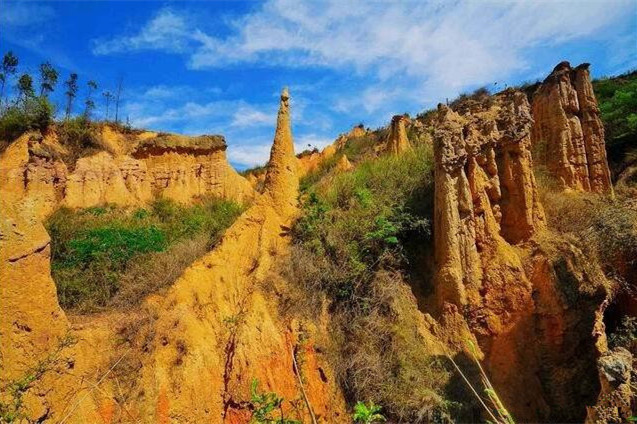
满布千沟万壑、鬼斧神工、绚丽异常的土林坐落在白洒坟村北面上坡上,分为四大片,占地近200余亩。放眼望去,奇特的土林,重重叠叠,参差有序。只见有的土柱高达十几米,耸立挺拔,有的则只有2-3米,粗壮敦实。曾多次欣赏过陆良彩色沙林、元谋土林的大量彩色图片,脑海中早已不知不觉地弥满着土林的身影,但当真实的土林在眼前涌现时,还是禁不住地欢喜和赞叹。
沿着沙沟土路小道,走进土林中,就仿佛来到了一个与世隔绝的仙境。奇特的土林景致令人目不暇接,看着那被时光机器雕凿成千姿百态、妙趣横生的各异形态,想象力开始自由驰骋。
远眺土林,莽莽苍苍,像奇幻的原始森林,一群群一片片土柱林立,无语诉说着风雨沧桑,时空仿佛回到了苍凉荒芜的时代。
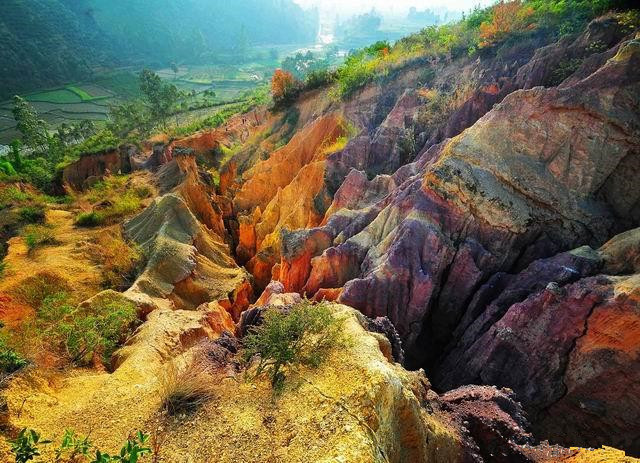
近观土林,其景又宛若鬼斧神工的艺术长廊,千姿百态,神情逼俏。有的像婷婷玉立的少女,仿佛在遥望远方的心上人;有的似威严武士,整装待发;有的柱顶杂草丛生,好像画天巨笔;有的土柱裸露身躯,好像金塔玉剑;有的像嬉戏的顽猴、昂首的骆驼、站立的棕熊,各种动物在其中或奔、或卧、或站、或跑,仪态万端,栩栩如生;有的像蘑菇、圆桌、鸟雀、花卉……更有奇者,双峰相连,如同恋人紧紧偎依,情意绵绵;数峰对视,恰似友人十里相送,难舍难分;还有如手执衣钵者,似和尚云游四方;亦有如猛虎者,在此镇守一方疆土……
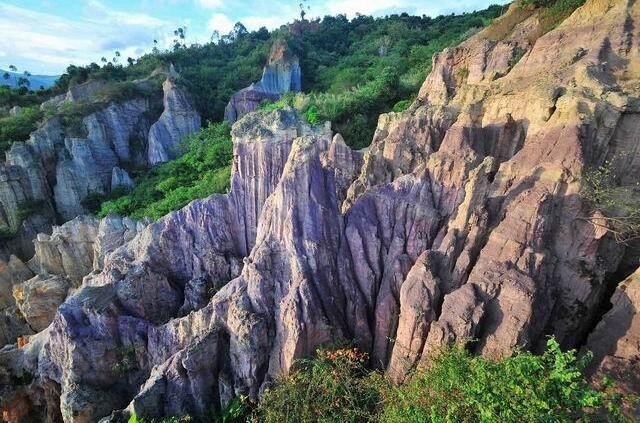
这些形态各异的土林雕像伫立旷野,仿似正在做一个个远古的梦,等待着世人去唤醒。有趣的是,一些似人似兽的土峰,当你转个弯,从另一个角度瞧过去,却转变成了另一个形象。置身奇景迭出的大自然迷宫之中,如梦似幻,美不胜收,时常仿佛游走在时光的长廊之中、漫步在童话故事里、搜索在曾经的记忆边。
由于土林的沙砾中含有多种矿物质,使得有的土柱甚至呈现出紫红色、暗红色、浅蓝色、黄色、灰白色、棕色等奇异的色泽,并伴随着早晚晴雨与四季光照、投射角度的变化产生不同色调的景观。真是让人不禁感叹,大自然的鬼斧神工。
About Lengdun Village
Lengdun Village belongs to Baohe Town, Gejiu City, Honghe Prefecture. It is located in the southwest of Baohe Township, 31 km away from Baohe Township, is the seat of the village committee. The land area is 4.29 square kilometers, the elevation is 239 meters, the annual average temperature is 25 ℃, the annual precipitation is 800-1100 mm. It’s suitable for planting rice and other crops.
Dai Ethnic Minority in Lengdun Village
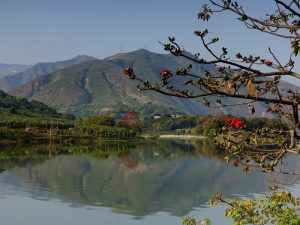
Lengdun Village is a Dai village with a strong cultural atmosphere, and is the main birthplace of Dai’s folk songs. The old people and the young students who can sing the traditional folk songs come to take part in the folk songs activities of Lengdun Village. It shows the memory and charm of traditional Dai culture for the younger generation.
Rural Economy
The total income of the village’s rural economy is 2.377 million yuan, among them: the income of planting industry is 960000 yuan, accounting for 40.38% of the total income, the income of animal husbandry is 1.15 million yuan, accounting for 48.38% of the total income; The second, third industry income 687000 yuan, accounting for the total income of 28.910.
Development Priorities
The main problems and difficulties are as follows:
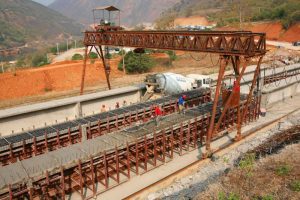
1.There is no place for villagers’ activities;
2. There is only one set of cultural facilities for broadcasting.
Development Ideas and Industries:
1. Develop economic forest fruit, such as: mango, litchi, banana, introduced new varieties of papaya;
2. Development of animal husbandry: cattle, pig, increase the number of outcrops, expand sugar cane, cassava cultivation area of 200 mu.
The Best Time to Visit Lengdun Village
Tour is available all the year round here. However, most of places in Honghe prefecture enjoy the subtropical monsoon climate, annual average temperature is 25℃. Try to avoid the moist and hot summer, the best time to travel is spring, autumn and winter.
How to Get there?
If tourists want to go to Lengdun Village, they should go to Gejiu City first. You have two ways to get to Gejiu from Kunming. You can take long-distance bus and train to Gejiu. As for airplane, it is not available up to now. And then you can take buses, taxis or self-driving to Lengdun Village.
Located in the north of Yunlong County(云龙县), Dali Bai Autonomous Prefecture, Nuodeng Ancient Town is a thousand-year Bai village. Located in mountainous area, it is far away from the hustle and bustle of metropolis. It is the true place with original flavor of life. Except for the profound history, Nuodeng is the important place of Ancient Salt and Horse Road. Salt plays an important role at Nuodeng Ancient Town.
How to Get to Nuodeng Ancient Town from Dali City
No matter which direction you come to Nuodeng Ancient Town, you must go to the county seat of Yunlong County first.
1. Dali City – Yunlong County(By Long-distance Bus)
With a distance of about 155 kilometers, tourists can go from Dali City to Yunlong County mainly by long-distance bus. The transportation between Dali City and Yunlong County involves two main long-distance bus stations, Dali Express Bus Station and Yunlong Bus Terminal. There are about 14 daily buses from Dali City to Yunlong County, as well as the journey is about 3 hours and 36 minutes and costs 43 yuan. Dali express bus station is located at No.1, Huancheng South Road, Dali City, Dali Prefecture, Yunnan Province. The departure time is 7:30, 8:10, 8:50, 9:30, 10:10, 10:50, 11:30, 12:10, 12:50, 13:30, 14:10, 14:50, 15:40, 16:30.
More information about Dali City-Yunlong County Transportation.
2. Yunlong County – Nuodeng Ancient Town
The distance between Yunlong Bus Terminal and Nuodeng Ancient Town is about 6 kilometers, you can take a taxi to Nuodeng Ancient Town. It takes about 12 minutes and spends 15-30 yuan.
Nuodeng Ancient Town and Baofeng Old Town are popular in Yunlong County. If you plan to Yunlong County of Dali Prefecture, Please contact us, Yunnan Exploration will provide attentive services.
Email: contact@YunnanExploration.com, or Phone: 0086-871-63511469, Wechat: 908400838
Transportation in Yunnan:
- Airlines in Yunnan
- Flights to Yunnan
- Airport Transfer
- International Flights to Yunnan
- Airports in Yunnan
- High-speed Rail in Yunnan
- Railway Stations in Yunnan
- Railways in Yunnan
- Trains to Yunnan
- Trans Asia Railway
- Metro in Yunnan
- Bridges in Yunnan
- Freeways in Yunnan
- Highways in Yunnan
- Roads to Yunnan
- Trans-Asia Roads
- National Roads in Yunnan
About Laomeng Town
Laomeng Town(老勐镇) is located in the northwest of Jinping Miao, Yao and Dai Autonomous County, Honghe Hani and Yi Autonomous Prefecture, Yunnan Province. Its geographical coordinate is 102°47′-102°57′ east longitude and 22°51′ -23°02′ north latitude. Laomeng Town borders Yingpan Township(营盘乡) in the east, Laojizhai Township(老集寨乡) in the south, Huangmaoling Township(黄茅岭乡) of Yuanyang County in the west, Ganiang Township(嘎娘乡) of Yuanyang County in the north and it was established in 1987. Township people’s Government is in Laomeng Street of Laomeng Village Committee, and Laomeng Town is the joint parts of “three counties and eight townships” and vital traffic road. With the total area of 194.41 square kilometers and cultivated land area of 2180 hectares, Laomeng Town has jurisdiction over Laomeng(老勐), Xincun(新村), Heping(和平), Xinanli(新安里) and Kuzhulin(苦竹林) 5 village committees and 79 villages. At the end of 2014, there were 4703 families and a population of 19947. Miao, Yao, Dai, Hani, Yi and Han six ethnic groups lives here for generation, with 19570 ethnic minority people, accounting for 98.11% of the total population, while the Miao minority population is of 12766 people, accounting for 64% of the total population. It is a poor mountainous area inhabited by multiple minorities.
Features of Laomeng Town
1. Laomeng Town is located in the joint parts of Yuanyang, Lvchun, Jinping “three counties and eight townships” and on the vital traffic roads. Coupled with obvious location advantage, abundant nature resources and convenient transportation, Laomeng town has developed into the important town in the west of Jinping county and the commodity distribution center of “three counties and eight townships”.
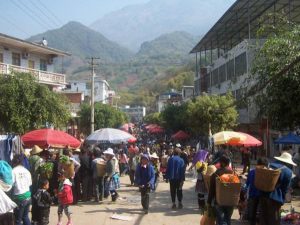
2. Tengtiaojiang River(藤条江) passes through Laomeng Town, and the land is distributed in the hot valley area, the humid and hot area and the high mountain cold area. The topography is complex, with the highest elevation of 2962 meters and the lowest elevation of 419 meters. There is a perennial river Pingba River(平坝河) in the territory, with no dry seasons, high headwaters, large drop and large discharge, which are conducive to the development of cascade hydropower stations. Pingba River has a high utilization value, but has not yet been developed. Forest coverage of the whole town is 29%, state-owned forest area of 2000 hectares.
3. Laomeng Town(老勐镇) is rich in cultural resources, and the traditional ethnic culture here is colorful. During the festivals, these traditional ethnic cultures get a concentrated display. Main ethnic festivals include “Guo Ma Festival(果玛节)” of Yi minority and “Huashan Festival(花山节)” of Miao minority.
Things to Do in Laomeng Town
1. Experience colorful minority culture, like Miao, Yao, Yi, Hani and Dai.
2. Laomeng Town is well-known for its Laomeng Sunday Market.
3. Taste the special cuisine of ethnic minorities.
Useful Travel Tips
1. Learn something about ethnic minorities in Laomeng Town as well as their costumes and culture in advance.
2. Laomeng Town is not far from Yuanyang County, it is the best choice to take Yuanyang as the next destination.
More Tour Information, Refer to Laomeng Market.
About Going to Market
Going to the market is one of the few recreations that people in the remote countryside. All over China in the rural areas where there are significant numbers of minorities, Market Days (赶集) are important days indeed. Minorities from all around the villages where the Market Day is held will flood into the village, both to buy as well as to sell all sorts of things.
Market Days are significant events in the weekly calendar of most minorities. It is an occasion for some to earn something extra by selling excesses from their farms; for others it is their weekly shopping experience. However more significantly, it is a major social event in their calendar. Most minorities, especially the ladies will dress up in their best and most colorful traditional dresses to go to the market. It is an opportunity for them to meet and to exchange news and gossip with others.
Why is Laomeng Sunday Market So Special?
In Jinping County of Yunnan Province, China, fascinating ethnic minority market can be seen in all its glory once a week at the Sunday Laomeng Market(老猛赶集). Laomeng(老猛) holds the most flamboyant market every Sunday. One can see people from six different ethnic minorities, with women and children dressing up in colorful dresses, different in their own traditional style. Market Days are great opportunities to see the various minorities in their traditional dresses.
Features of Laomeng Sunday Market
1. Laomeng Market is well worth the journey, a very flamboyant place with a variety of different minority groups such as the Hani, the Yao, the Yi and extremely colourful Miao.
2. There are places where one can have a bite to eat but not so much at temporary stalls geared up for the job on the day but at small permanent restaurants that are part of the towns makeup. There are sections selling lovely multi coloured ethnic minority clothes and materials, sections selling fresh fruit and vegetables, metalware and bamboo items.
3. As with other markets in the area Laomeng is no different with regards to it not only being an open air or outdoor supermarket but also a place for socializing.
4. On the whole Laomeng is a fascinating insight into minority groups with their traditional ways of life and preserved cultural habits. The tribal costumes or finery of each different minority group contrast starkly with each other and before long one is able to recognize due to the colour of the cloth, the headdress or ornamentation which group a person belongs to.
The Time of Going to Market
Market Days are normally held on a regular basis in most places. This can be once a week, every 5 days and so on. Laomeng Town holds the market every Sunday. Market Days normally last a whole day. People, especially traders will start arriving at the market from very early in the morning. Throughout the day, there will be people streaming in from all the surrounding villages. Most of these markets do not finish until around 4 pm. The peak of such markets is normally around noon. Shortly after lunch time the market winds down, the hustle and bustle wanes and truckloads of Indigenous peoples can be seen leaving Laomeng with sacks of produce or heavily laden baskets.
How to Get There
Laomeng Town(老勐镇) is far from Kunming, and the way to Laomeng Market may be not so good.
1. Departing from Kunming
Long-distance Bus
There are 6 non-stop buses a day from Kunming East Station to Jinping Bus Terminal. When you are there in Jinping bus terminal, You can take the regular buses to Laomeng Town there, about 3 hours.
Kunming-Jinping County
Price: 134 CNY, 141 CNY, 148 CNY or 159 CNY
Departure Time: 8:00, 9:00, 10:00, 11:00, 12:00, 13:00
Distance: 397 kilometers
Consume Time: 5 hours
Tips: The price and time are for reference only, specific with actual condition. More prices and departure time, you can ask for details at bus terminals.
Train
There is no railway station in Jinping County, you can’t reach to Jinping County directly by train. If you want to take train, you are suggested to transfer in Mengzi City.
Kunming-Mengzi-Jinping County
You will spend about 4 hours on the train from Kunming to Mengzi, then around 4.5 hours from Mengzi to Laomeng Town of Jinping County.
2. Departing from Yuanyang
Departing from Xinjie Town of Yuanyang, there is no railway station, so trains are not available. You can take the bus or chartered bus from Xinjie bus terminal to Laomeng Town, about 2.5 hours.
Accommodation Around Laomeng Market
For accommodation, tourists can go to the county seat of Jinping County or Xinjie Town of Yuanyang County. However, for a better traveling experience, you are suggested to stay in Yuanyang County for overnight. There are a lot of attractions in Yuanyang County, especially the Yuanyang Hani Rice Terraces as well as the sunrise and sunset of Rice Terraces. Supporting facilities of tourism in Yuanyang County are relatively complete.
Useful Travel Tips
1. The trick again with Laomeng is to either overnight there the day before the market or travel early from wherever else you might be to get there to see the vividly coloured crowd ‘en masse’ so to speak doing all things indigenous.
2. As with all the other markets in Yunnan Province one has to arrive at Laomeng pretty earlier to make the most of this exceptionally vibrant and colorful affair. The early bird certainly catches the worm or at least some very photogenic scenes and characters if you like photographing.
3. At the market day, there are minorities from surrounding villages going to Laomeng Market. Learn something about these minorities as well as their costumes and culture in advance.
Nearby Attractions
Qingkou Village of Xinjie Town in Yuanyang County, Honghe
Yuanyang Hani Rice Terraces
Duoyishu Rice Terraces in Yuanyang County, Honghe
Laohuzui Rice Terraces in Yuanyang County, Honghe
72-Hour Visa-Free Transit in Kunming City
Since 2013, approved by the State Council of China, a 72-Hour Visa-Free transit policy has been implemented in 12 airports, it is also including Kunming Changshui International Airport. Requirement Travellers process...
Top Seven Museums in Kunming City
Yunnan Provincial Museum The former one in the downtown has been already closed and the new one was opened in near Guandu Old Town on 18 May 2015. Yunnan...
Tea Primogenitor Festival of Kunlu Tea Mountain in Ninger County, Puer
Introduction Chinese Name:宁洱县困鹿山哈尼茶祖节 English Name: Tea Primogenitor Festival of Kunlu Tea Mountain in Ninger County, Puer The Hani people in Kunluo Mountain make a living by growing and guarding...
Shankang Tea Primogenitor Festival in Jingmai Tea Mountain, Puer
Overview and Introdutcion Chinese Name:景迈布朗山康茶祖节 English Name: Shankang Tea Primogenitor Festival in Jingmai Tea Mountain, Puer “Blang Sang Kang Tea Ancestor Festival” is called “Hao Gou Long” by the Blang...
Travel Tips of Yunnan Tea Primogenitor Culture Tour
Tea Primogenitor in Yunnan Global tea culture origins from China, Shennong is honored as the very first primogenitor of tea. However, instead of Shennong, Kongming(Known as Zhuge Liang among...
Top 6 River Bends in Yunnan Province
Mati River Bend The Mati River Bend near Kunming offers a panoramic view from Laoya Mountain near Jianshan Village, Yiliang County. This horseshoe-shaped bay along the Mati River is...
Top 10 Mountains for Trekking Tours around Kunming City
In the cool weather of autumn, there are many choices around Kunming for aficionados of outdoor tours since they can enjoy an impressive experience, and these Ten selected trekking...
Baoxiu Earth Forest in Shiping County, Honghe
The Formation of Baoxiu Earth Forest An earth forest is a form of geomorphology caused by earth movement and erosion. It takes the form of pillars which from a distance...
Lengdun Village of Baohe Town in Gejiu City, Honghe
About Lengdun Village Lengdun Village belongs to Baohe Town, Gejiu City, Honghe Prefecture. It is located in the southwest of Baohe Township, 31 km away from Baohe Township, is...
Dali City-Nuodeng Ancient Town Transportation
Located in the north of Yunlong County(云龙县), Dali Bai Autonomous Prefecture, Nuodeng Ancient Town is a thousand-year Bai village. Located in mountainous area, it is far away from the...
Laomeng Town of Jinping County, Honghe
About Laomeng Town Laomeng Town(老勐镇) is located in the northwest of Jinping Miao, Yao and Dai Autonomous County, Honghe Hani and Yi Autonomous Prefecture, Yunnan Province. Its geographical...
Laomeng Sunday Market in Jinping County, Honghe
About Going to Market Going to the market is one of the few recreations that people in the remote countryside. All over China in the rural areas where there...
Tips Before Travel
Bring copies of your passport
Don't assume you're restricted to the main hubs of Beijing and Shanghai, our tours can start from any city.
Register with your embassy
For your safety, please register with the Embassy.
Always have local cash
Exchange some local currency for your trip
Our Team
Customize a Trip
Start planning your tailor-made holiday to China by contacting one of our specialists. Once enquired, you’ll get a response within 0.5~23.5 hours.
